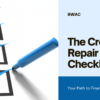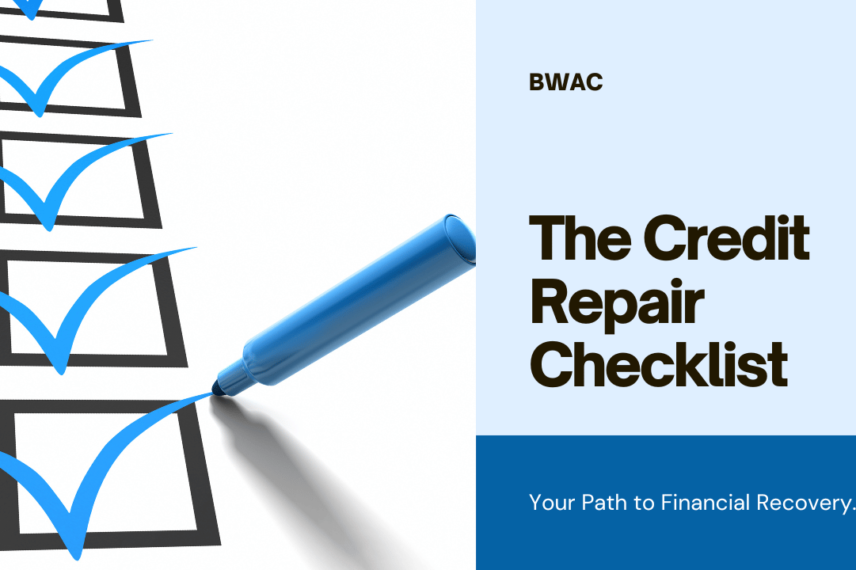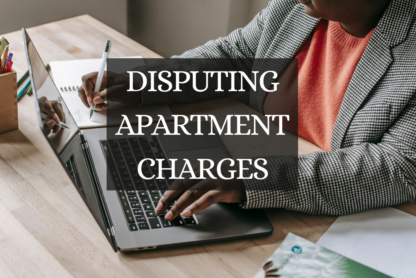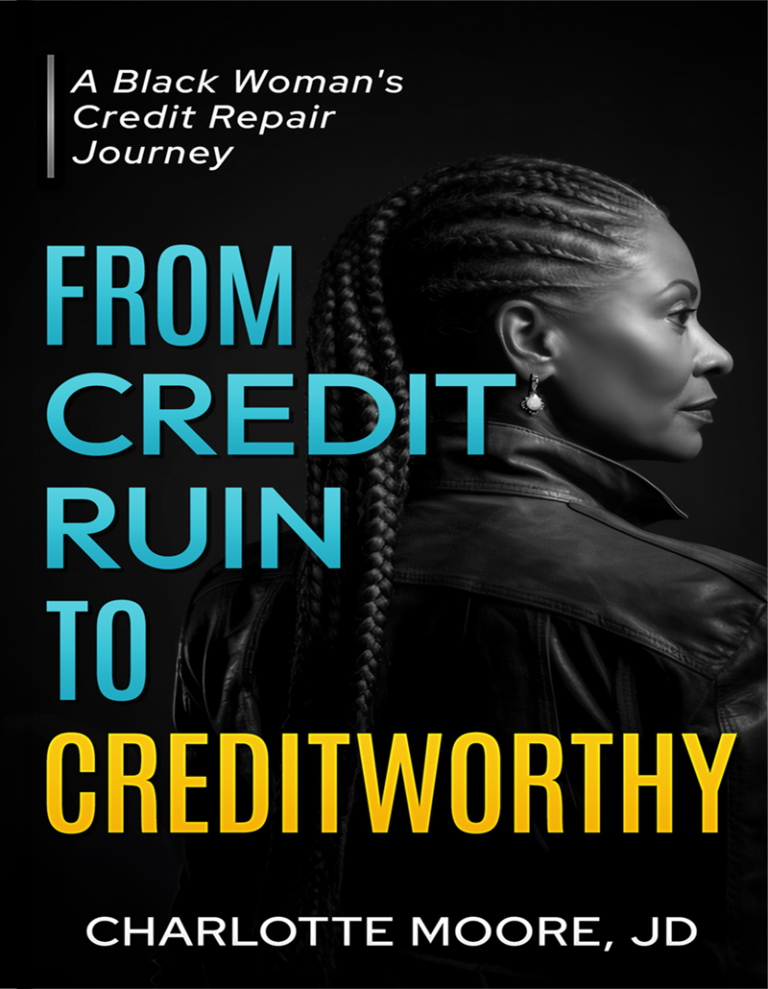Having a strong credit score opens doors to financial opportunities, while a low score slams them shut. With poor credit, you may struggle to get approved for loans or credit cards, pay higher interest rates, or fail to qualify for apartments or jobs. The impacts can feel like an endless cycle of rejection and limitations.
The good news is credit repair is possible with time and effort. By following a strategic checklist, you can identify issues damaging your credit and work to resolve them. With improved credit, you gain access to better loan rates which makes debts easier to pay off. Like dominoes falling, each credit repair step you complete brings your closer to overall financial recovery.
This comprehensive guide will outline the steps for DIY credit repair. We’ll cover:
- Pre-application prep work
- Ways to remove inaccuracies on your reports
- How to negotiate with creditors
- Building new credit the right way
- Maintaining good behaviors to avoid past mistakes
Key Takeaways
- Checking your credit reports regularly is crucial for identifying and disputing errors that may be damaging your score.
- Budgeting, paying down debts, and careful financial planning are essential parts of the credit repair process.
- Reputable credit counseling services can provide guidance, but beware of credit repair scams.
- Building and maintaining good credit takes diligence, time, and commitment to new financial habits.
- With determination and a systematic approach, credit repair is an achievable goal that can put you on the path to financial health.
With persistence and the right information, the credit repair process can transform your financial opportunities and give you relief from endless debt. This checklist is your roadmap to take control of your financial health. Let’s get started!
Assessing Your Financial Goals
Before diving into credit repair tasks, it’s important to have a clear vision of your financial goals. Where do you want your credit to be 1 year, 5 years, or 10 years from now? How will a strong credit score help you achieve lifestyle or business dreams?
If your credit goal is a vague “improve my credit”, it’s hard to stay motivated or know which actions to prioritize. Get specific instead. Here are some examples of possible credit goals:
- Increase credit score from 550 to 700 within 18 months to qualify for a home mortgage
- Improve credit score from 620 to 740 within 9 months to refinance student loans at a lower rate
- Boost credit score from 690 to 750+ within 12 months to get approved for a new car and lower auto loan rate
Or maybe your credit repair goals are simpler, like qualifying for a credit card with rewards you can use for a dream vacation. Outline the specifics so you know exactly what benchmark you’re aiming for.
Having a clear finish line makes a massive difference when you’re buried under the daily grind of credit repair. Refer back to this goal often for the motivation to implement then stick with new habits.
And remember, this isn’t a solo journey. Don’t be afraid to enlist help from credit counselors, financial advisors, or knowledgeable friends. Accountability partners can offer guidance when you feel lost or discouraged.
Now it’s time to get an accurate overview of where your credit currently stands.
Checking Your Credit Reports
Before launching any disputes or credit building strategies, you need to review your credit reports from the three main bureaus: Equifax, Experian and TransUnion. Under Federal law, you can obtain a free credit report from each bureau once per year at AnnualCreditReport.com.
Ordering your reports is step one for understanding which items are hurting your score. Focus on these main factors:
Payment History – Are there any late payments? How recent are they? Multiple recent late payments will significantly lower your score.
Debt Amounts – How much do you owe on each account and line of credit compared to the credit limit? Owing more than 30% of the limit on revolving debt like credit cards can damage your score.
Length of Credit History – In general, the longer you’ve had accounts open and in good standing, the better. Having a mix of account ages helps too.
New Credit Applications – Opening many new accounts in a short period lowers your score. Every application triggers a hard inquiry on your report.
Credit Mix – Lenders like to see you managing different account types responsibly, including both revolving (credit cards) and installment (mortgage, auto, student loans).
Checking all three reports is essential because errors or outdated information may appear on one but not the others. For a full picture, you need details from Equifax, Experian and TransUnion.
Once you get your reports, comb through carefully and take notes on any inaccuracies you find. Also note which factors above are hurting your scores with each bureau. This informs the dispute and improvement strategies to focus on.
Identifying Errors on Your Credit Reports
Here are some common report errors to watch for as you review your credit reports closely:
- Duplicate accounts – The same debt appears twice, artificially inflating your owed amounts.
- Closed accounts listed as open – You pay off and close an account, but the credit bureau fails to record it properly.
- Inaccurate personal info – Wrong address history, misspelled name, or other outdated personal details.
- Debts resulting from identity theft – Criminals open unauthorized accounts in your name and rack up debt.
- Accounts that don’t belong to you – Debts incorrectly attributed to you that are not your responsibility.
- Late payments you made on time – The creditor reported incorrect date despite your proper payment.
- Inflated account balances – The owed amount is higher than what you actually owe.
Don’t automatically assume that everything is 100% accurate on your credit reports. Mistakes happen, and you could have errors dragging down your score unfairly. Disputing errors gets them corrected or removed by the bureaus.
Building Your Dispute File
For each error, gather supporting dispute evidence like:
- Account statements showing the true payment or balance info
- A copy of your credit application if your personal info is wrong
- Police reports and affidavits related to identity theft
- Letters or emails proving the account isn’t yours
The more proof you can provide to the bureaus, the better. Make copies of your evidence for each dispute packet you’ll submit. Send the packets via certified mail so you have tracking records of their receipt.
Don’t expect immediate resolution. The dispute process takes about 30-45 days as the bureaus investigate. During this time, you cannot apply for new credit. Be patient, follow up if necessary, and don’t get discouraged. Persistence pays off.
Creating a Budget
Managing your finances strategically is key for credit repair and staying on top of bills that impact your score. Budgeting gives you control over where your money goes so more flows to debt repayment and savings.
Calculating Income
Add up income after taxes from regular employment, side jobs, retirement or social security, and any other sources. Be realistic about your usual take-home amount each month. Include predictable bonuses or freelance work, but don’t pad the total with inconsistent sources.
Tracking Spending
Grab credit card and bank statements going back ~3 months. Tally every cent spent across categories like:
- Housing – Rent/mortgage, utilities, maintenance
- Transportation – Car payment, insurance, gas, repairs
- Food – Groceries, dining out, work lunches
- Personal – Clothing, toiletries, gym, subscriptions
- Entertainment – Movies, concerts, hobbies, travel
- Debt – Student loans, credit cards, medical, personal
Apps like Mint and You Need a Budget make spending tracking and categorization easy. But manually recording every expense for a few months helps you confront spending realities. Break the denial and get nitty gritty!
Finding the Shortfall
Now compare income versus spending totals in each category. Where are the leaks draining your budget? Where can you realistically cut back and funnel more to savings or debts? Even $50 or $100 per month toward debts makes a difference.
Build some breathing room into your budget for unexpected expenses and emergencies too. Financial shocks happen – your budget needs room to flex so you avoid missing debt payments.
Begin living by your new budget ASAP. It may feel restrictive initially, but stay focused on the freedom from debt ahead. And re-adjust categories as needed if your circumstances change over time.
Disputing Errors on Your Credit Reports
Disputing legitimate report errors is a cornerstone of credit repair. Pay for deletions is a disputed type where you offer to repay a debt that you technically owe in exchange for its removal from your credit reports. This tactic works best for older collection accounts.
We covered gathering your dispute evidence earlier. Here are steps for submitting effective disputes to get errors removed:
1. Pick your battles
Don’t dispute every little thing, especially if an item is accurate but you just don’t like it. Instead, focus disputes on clear errors dragging down your scores. Removing recent late payments and lowering inflated high balances should be priorities. Think strategically.
2. Mail formal dispute letters
Submit a separate dispute letter to each bureau – Equifax, Experian and TransUnion. Include your identifying details, summary of the dispute, and request for investigation and removal of the item. Attach your supporting evidence. Send by certified mail with tracking.
3. Follow up diligently
After 30 days, verify the inaccurate item was modified or removed from your reports. If not, call the bureaus via phone to check the dispute status and re-submit evidence if needed. Consider hiring a reputable credit repair company to assist with efficient follow up.
4. Rinse and repeat
Keep chipping away at errors across your reports. Pay for deletions and goodwill deletion letters to creditors are also options if the traditional dispute route fails. Persistence and an attention to detail will pay off over time.
5. Take notes
Stay organized by logging disputed items, dates, results, and next steps. Keep all physical and digital records too. You may need to reference past disputes down the road.
The disputes process is tedious, but the score payoff is worthwhile. Keep your “eye on the prize” and don’t let the bureaus dismiss your valid disputes. With time and effort, you can repair the inaccuracies dragging down your credit health.
Negotiating with Creditors
Creditors want to get paid, even if that means settling for less than the full amount you owe. Negotiating payoffs for less than the balance works in your favor. You pay less, and the creditor agrees to update your account status in return.
This helps in two big ways – you resolve old debts, and the accounts stop negatively impacting your credit scores. Below are proven tips to negotiate with creditors effectively:
Review account terms
Check statements and paperwork for details like interest rates and time limits. Understanding the fine print will help you strategize and bargain from a position of knowledge.
Research state laws
Your state may have rules about statue of limitations on debts or interest rate caps the creditor must honor. Use laws in your favor during negotiations.
Offer lump sum or installment payments
Creditors often agree to settle for 20-50% of the owed amount if you pay in a lump sum. Get the deal in writing before sending payment. Installments are another option.
Don’t fall for pressure tactics
Collectors may use intimidation to get you to pay the full amount. Stay calm and firm if they won’t accept reasonable offers. Let them know you’re willing to walk away.
Request removal from credit reports in writing
In exchange for your payments, demand removal of associated negative items from your credit reports. Get this agreement formalized in the settlement offer letter before paying.
Send payoffs by secure methods
To protect yourself after a deal is reached, only pay creditors via certified checks or bank wire transfers. Never send cash or generic gift cards. Keep documentation of payments.
With persistence, creativity, and a little negotiation finesse, you can settle old collection debts for pennies on the dollar in many cases. Just make sure the creditor upholds their end of the bargain and updates your credit reports accordingly after payment.
Paying Off Debts
Reducing debt owed greatly improves your credit utilization ratio and scores. Even if loan balances seem overwhelming, consistent payments make a difference. Follow these strategies to become debt free on a timeline that works for you:
List all debts smallest to largest
Gain momentum in the payoff process by tackling small debts first while making minimum payments on larger ones. Knocking out a few small wins motivates you to keep going.
Pay minimums on all debts to stay current
Late payments hurt your credit, so staying current on all accounts is critical. Zero in on the smallest debts to pay off first while keeping larger ones in good standing.
Pay more than the minimum
Paying the minimum only prolongs debts and increases total interest paid over time. Send extra toward principal every month to pay down balances faster.
Sell stuff you don’t need
Free up cash for extra debt payments by selling unused electronics, jewelry, furniture, clothing items and more on eBay, Craigslist or consignment. Every dollar counts.
Negotiate lower interest rates
Call creditors to politely request lower rates. If they won’t accommodate, consider consolidating or transferring balances to secure lower rates.
Stick to your new budget
Cut discretionary costs and funnel the savings to debt repayment. Small lifestyle sacrifices lead to the big win of becoming debt free.
Earn extra income
Boost your debt payoff momentum with side jobs like rideshare driving, tutoring, freelance writing or pet sitting. Treat this income as bonus payments toward debts.
Payoff momentum builds when multiple small debts get cleared quickly. This frees up money to intensify payments on the larger debts. Stay disciplined and motivated by the light you’ll see at the end of the debt freedom tunnel.
Building Credit the Healthy Way
Opening new accounts responsibly and making on-time payments builds your credit profile. But avoid quick-fix gimmicks that seem too good to be true. Here are healthy ways to establish credit history:
Get a secured credit card
These require a refundable deposit that becomes your credit limit. Use the card lightly and make payments by the due date. In 6-12 months you may qualify to upgrade to an unsecured card and get your deposit back.
Become an authorized user
Ask a family member with good credit to add you as an authorized user on a credit card account. Their on-time payments get added to your history, but you aren’t liable for the debt.
Apply for credit builder loans
The lender reports monthly payments to the credit bureaus. The loan proceeds are held in a savings account that you receive at the end of the loan term when paid in full.
Open a credit builder account
Similar to loans above, the account is reported to bureaus. On-time payments show in your history. The deposits are returned when the account is closed.
Consider reporting utility bills
Some cell phone and utility companies offer reporting of your monthly payments to bureaus. This helps build positive payment history.
Practice the 1-3 Rule
Aim for no more than 1 new credit application every 3 months. Too many hard inquiries in a short timeframe can lower your scores.
Building credit takes patience, but steady progress pays off. Stay strategic in your approaches for healthy profile expansion over time. The rewards will come!
Choosing a Reputable Credit Repair Company
Do-it-yourself credit repair is certainly possible, but can feel overwhelming. Seeking help from the professionals may be a smart move depending on your circumstances. Choosing a trustworthy company is key. Look for:
- Expert knowledge – Ask about staff experience and certification. You want confidence they can successfully handle the nuances of credit repair disputes.
- Proven results – Reputable companies have portfolios of before/after score results from past clients. Ask for examples relevant to your scenario.
- Fair pricing – Cost structures vary from flat-rate to monthly fees. Avoid companies charging upfront before providing any services.
- Positive reviews – Search the Better Business Bureau and consumer sites for feedback on customer satisfaction levels. Many complaints may signal issues.
- Security measures – Ensure proper protections are in place to keep your personal data safe and prevent identity theft. This is crucial.
- Legal compliance – Legitimate companies follow all state and federal credit repair laws. Be wary if a provider makes questionable claims.
Don’t merely trust ads or testimonials on a website. Do your homework to confirm credit repair firms can deliver on promises to help your unique situation. An established company with satisfied clients is key to success.
Understanding the Credit Repair Organizations Act (CROA)
The Credit Repair Organizations Act (CROA) is the federal law governing credit repair services. All legitimate companies must follow its regulations including:
- Written contract – Credit repair organizations must provide a detailed written contract that clearly explains services, guarantees, total costs and the 3 day right to cancel without penalty.
- 3 day cancellation period – Under the CROA, you have three business days to review the contract and cancel without any charges if you change your mind.
- No upfront payments – It is illegal for credit repair companies to demand payment before services are fully rendered. Avoid any company asking for upfront fees.
- Ongoing services – The CROA requires credit repair work to be provided on an ongoing basis, not as a one-time fix. Expect regular status updates.
- Money-back guarantee – Credit repair companies must guarantee services in writing or offer refunds. There should be a refund policy if you’re not satisfied with their work.
Understanding consumer protections under the CROA helps you hire an ethical and compliant repair firm. Avoid companies that flout the law. It signals trouble ahead.
Avoiding Credit Repair Scams
Many scammers claim to easily “fix” bad credit in violation of consumer laws. They charge big upfront fees and deliver little or nothing in return.
Here are some common credit repair scams to watch out for:
Upfront payment demands
As mentioned, it’s illegal under the CROA for credit repair companies to require upfront payments. Unscrupulous firms will ignore the law and insist on fees before providing services. Don’t give in if a company pressures you.
Excessive fees
Credit repair costs vary, but grossly inflated fees are a red flag. Price gouging desperate consumers is predatory. Make sure the quote seems fair for your area and circumstances.
Blanket guarantees
Claims of being able to remove any negative item from reports are lies. No one can make guarantees without reviewing your full reports. “Too good to be true” promises are scams.
Credit monitoring imposters
Some companies pretend to be legit credit monitors charging monthly fees without actually checking reports or scores. They provide no services while billing endlessly.
Identity theft assistance scams
Con artists take advantage of identity theft victims by pretending to restore credit. They imply that fixes require signing up for high-fee services. Don’t fall for it.
Advance fee loan scams
Scammers ask you to pay “verification” or insurance fees before approving loans. They pocket the money and disappear with no actual loan funding.
Pyramid schemes
Some scammers focus on recruiting more victims into the scam versus providing services. Multilevel marketing of bad services spreads the harm exponentially.
Avoiding scams comes down to consistent skepticism, spotting red flags, and never letting desperation overrule good judgement. Get educated on your rights as a consumer. Knowledge helps defend against fraudsters aiming to profit off your hardships.
Maintaining Good Credit
Now for the ongoing work – building credit is a marathon, not a sprint. Maintenance and vigilance are vital after making repairs. Here are some habits to practice:
Monitor reports frequently
Check your credit reports every 4 months or so for errors or signs of fraud. Dispute problems immediately before they sink your scores again. Staying on top of your reports is key.
Use credit responsibly
Keep credit card balances low and make payments on time every month. Only apply for new credit as needed based on your goals and scores. Carry on the good behaviors established during repair.
Create a 6 month emergency fund
Having cash reserves prevents you from missing payments or accumulating credit card debt when unexpected expenses pop up. Work to build a 6 month safety net.
Pay down debts aggressively
As existing accounts are paid off, don’t pile on new debt. Maintain progress by paying more than minimums and funneling freed-up money toward the next repayment priority.
Review your budget periodically
Revisit your budget monthly or quarterly to adjust categories as life circumstances change. Keep money consciously flowing toward priorities like debt repayment and savings.
Plan ahead for big purchases
Save up to buy big ticket items in cash instead of financing them. If financing is unavoidable, make a larger down payment to avoid maxing out new credit.
Create payment reminders
Use a calendar, app alerts or email reminders to pay your bills on time every month without fail. Late payments can sabotage all your hard work.
Review your credit yearly
Plan to review your full credit reports annually before the annual free access period expires. Dispute any errors right away to prevent score drops.
Staying creditworthy requires vigilance long after your scores initially rebound. But forming intentional money habits makes the ongoing effort easier over time. You’ve got this!
Conclusion
As the above tips illustrate, credit repair is a process. It takes diligent work, savvy strategizing, and patience as setbacks or disputes slow your progress. But the payoff in peace of mind and financial opportunities is invaluable.
With a step-by-step approach, you can take control of your credit scenario and rebuild stronger financial health. Don’t become overwhelmed. Follow the checklist and celebrate small wins along the way. You have the power to repair your credit and transform your financial future for the better.
The first step is getting crystal clear on your “why”. Let your credit goals and dreams motivate you through frustration or discouragement. Maintaining focus on the destination will inspire you to do the work required each day to eventually arrive there successfully.
You’ve got this! With the right mindset and smart strategies, credit repair success is within your reach. Now go get started on step one! The financial possibilities on the other side are waiting for you.
Frequently Asked Questions
Q: What is credit repair?
A: Credit repair is the process of improving your credit score by identifying and correcting errors on your credit report, negotiating with creditors, and paying off debts.
Q: Can I fix my credit myself?
A: Yes, you can fix your credit yourself by checking your credit score, improving your payment history, and avoiding new credit.
Q: What is the Credit Repair Organizations Act (CROA)?
A: The CROA is a federal law that ensures credit repair service companies do not overstate what they can do for consumers to drum up business.
Q: How do I choose a reputable credit repair company?
A: Look for companies that have a good reputation, are transparent about their fees, and offer a money-back guarantee.
Q: How often should I check my credit report?
A: You should check your credit report regularly to keep track of your progress and make sure the right information is being reported over time.
Q: How can I dispute errors on my credit report?
A: You can dispute errors on your credit report by contacting the credit bureau and providing evidence to support your claim.
Q: How can I negotiate with creditors?
A: You can negotiate with creditors by explaining your financial situation, proposing a payment plan, and asking for a lower interest rate.
Q: How can I pay off debts?
A: You can pay off debts by creating a budget, prioritizing high-interest debts, and considering debt consolidation.
Q: How can I build credit?
A: You can build credit by making on-time payments, keeping credit utilization low, and applying for credit sparingly.
Q: How can I maintain good credit?
A: You can maintain good credit by regularly checking your credit reports, creating a plan for financial goals, and staying on top of bills and payments.







